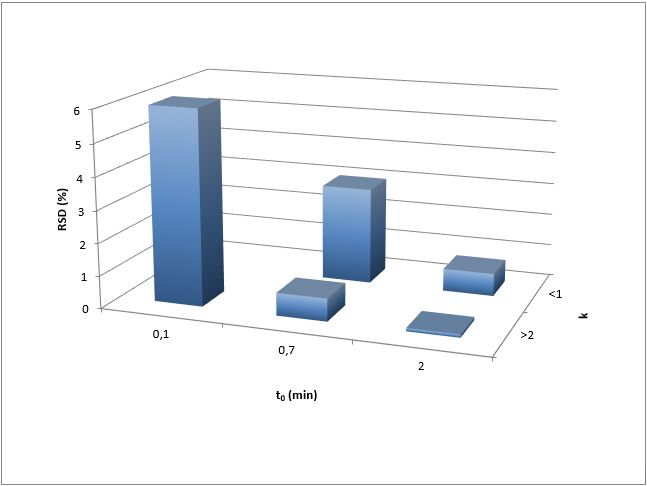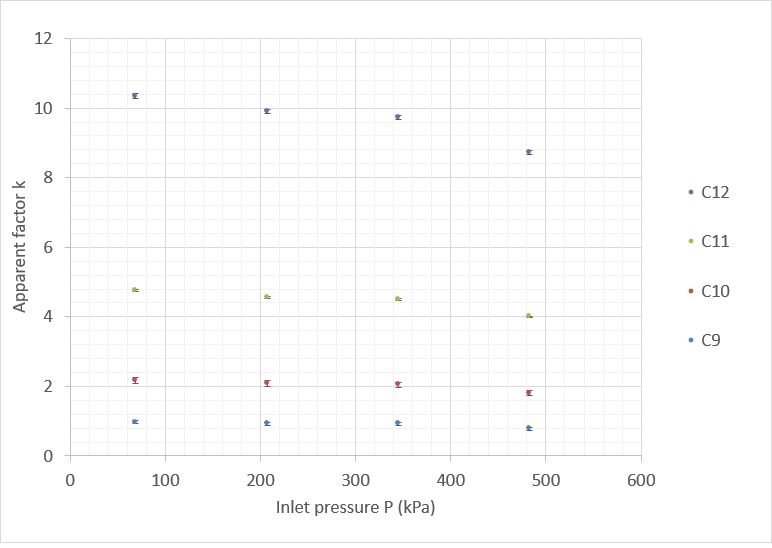|
Introduction
Up to now, it was established that pressure does not influence the retention of solutes in gas chromatography. However, a research team of Rouen encountered some problems during the modelling of retention. Without considering the pressure effect in the model, some of the obtained retention time for their components seriously differed from the predicted ones; differences reduced when considering the pressure effect in the model. Therefore, it seems that the pressure has an influence on retention and that is what is studied here.
Experimental conditions
The study was performed on a GC Clarus 500 (Perkin Elmer) with a FID detection. The column used was a DB-35MS (35% Diphenyl / 65% Dimethylpolysiloxane, Agilent). The components (n-alkanes from 9 to 12 carbons, C9 to C12 respectively) were prepared in dichloromethane (analytical reagent grade). The inlet pressure ranged from 69kPa to 483kPa and the analyses were conducted in isothermal conditions at 70°C.
Results
To ensure that the injections provide precise values, their repeatability were studied (Figure 1). To do it, the relative standard deviation (RSD) was calculated for different conditions leading to different values of apparent retention factor (k) and hold-up times (t0). It seemed that the higher these two values were, the lower the RSD was. In this study, the conditions were such that the RSD was about 0.7%.
The repeatability was good, so the results obtained for alkanes C9 to C12 were precise (the error marks in the graph, which are only slightly visible, correspond to the RSD) and it seemed that the pressure did influence the retention of these solutes in these conditions and with this column (Figure 2). Between 69kPa and 483kPa, the retention was reduced by approximately 15% for each component.
Conclusion
Contrary to what we thought until now, pressure may have a real impact on retention in gas chromatography. In this study, it was demonstrated that it had an impact on n-alkanes at 70°C. To see if these results can be generalized, new studies must be performed with other solutes in other conditions.
|
|

Figure 1 : Repeatability of the injections in GC. The RSD is calculated for different conditions of pressure and temperature in such a way as to obtain different values of hold-up times represented in the first dimension and values of retention factors which can be <1 or >2 (2nd dimension)

Figure 2 : Influence of the pressure P on the apparent retention factor k of n-alkanes Ci, i ranging from 9 to 12, in isothermal conditions at 70°C
|




